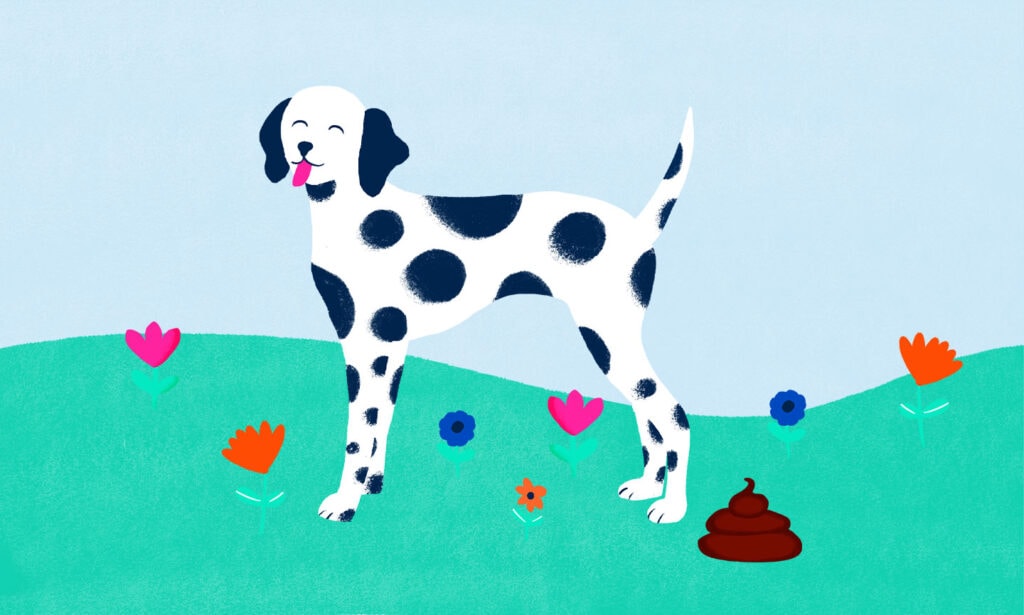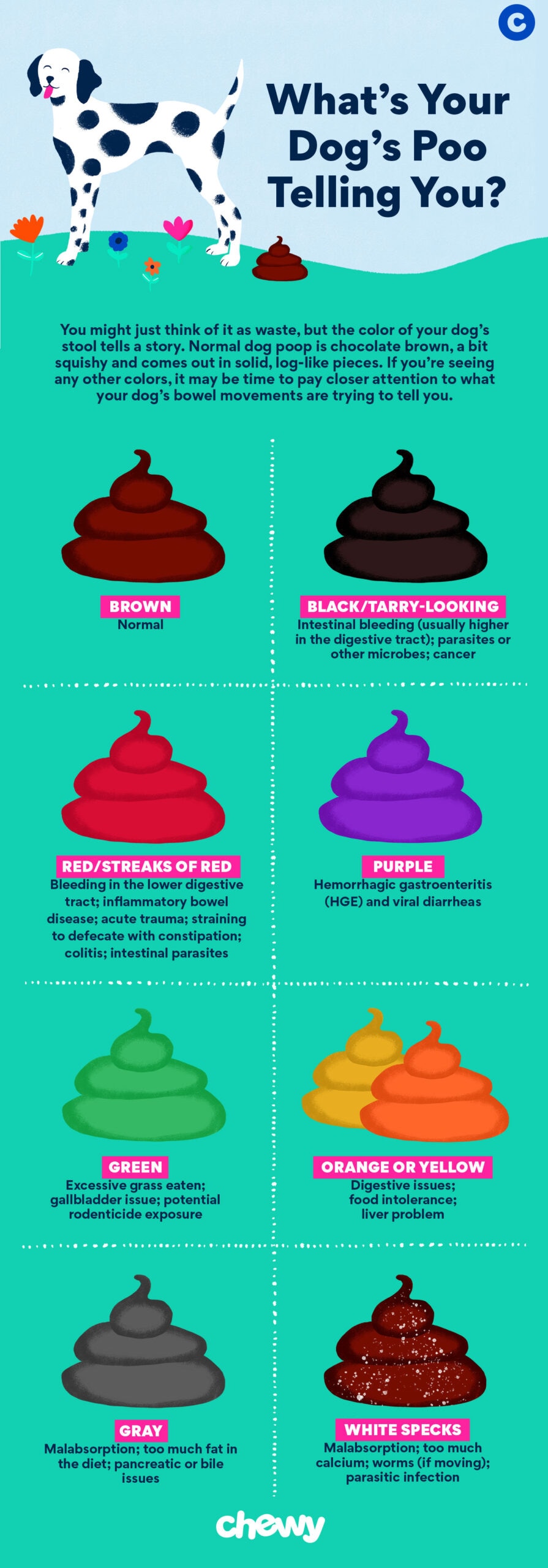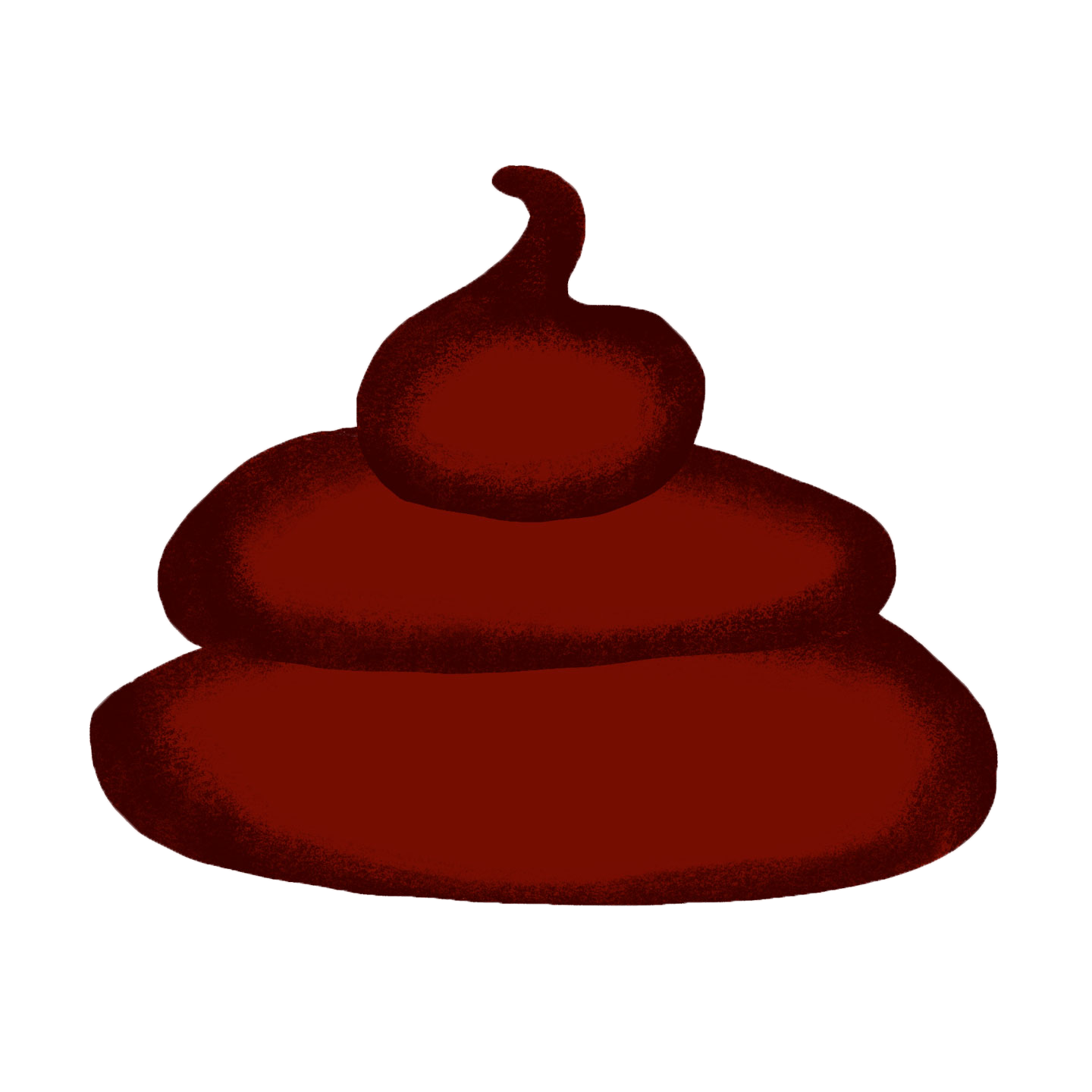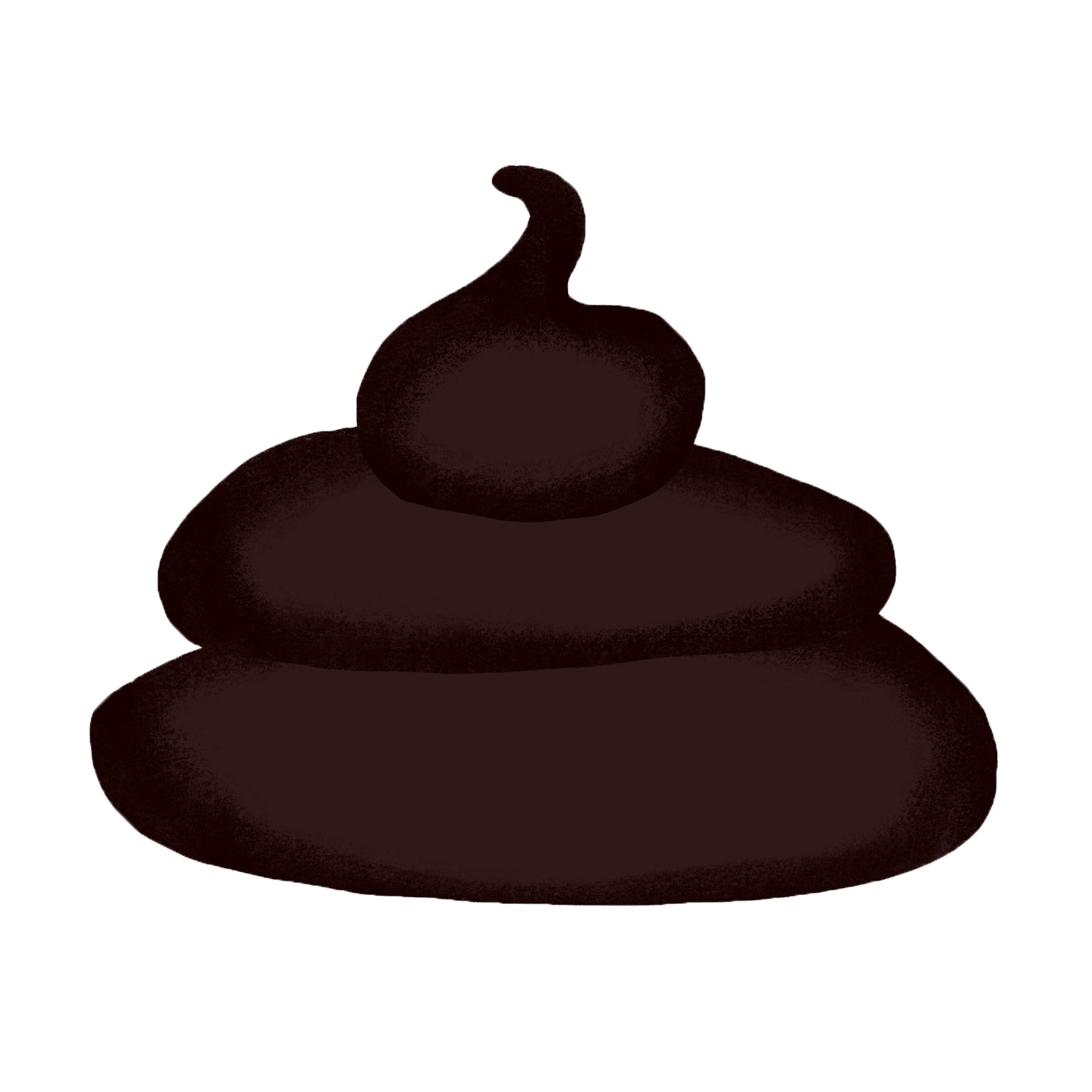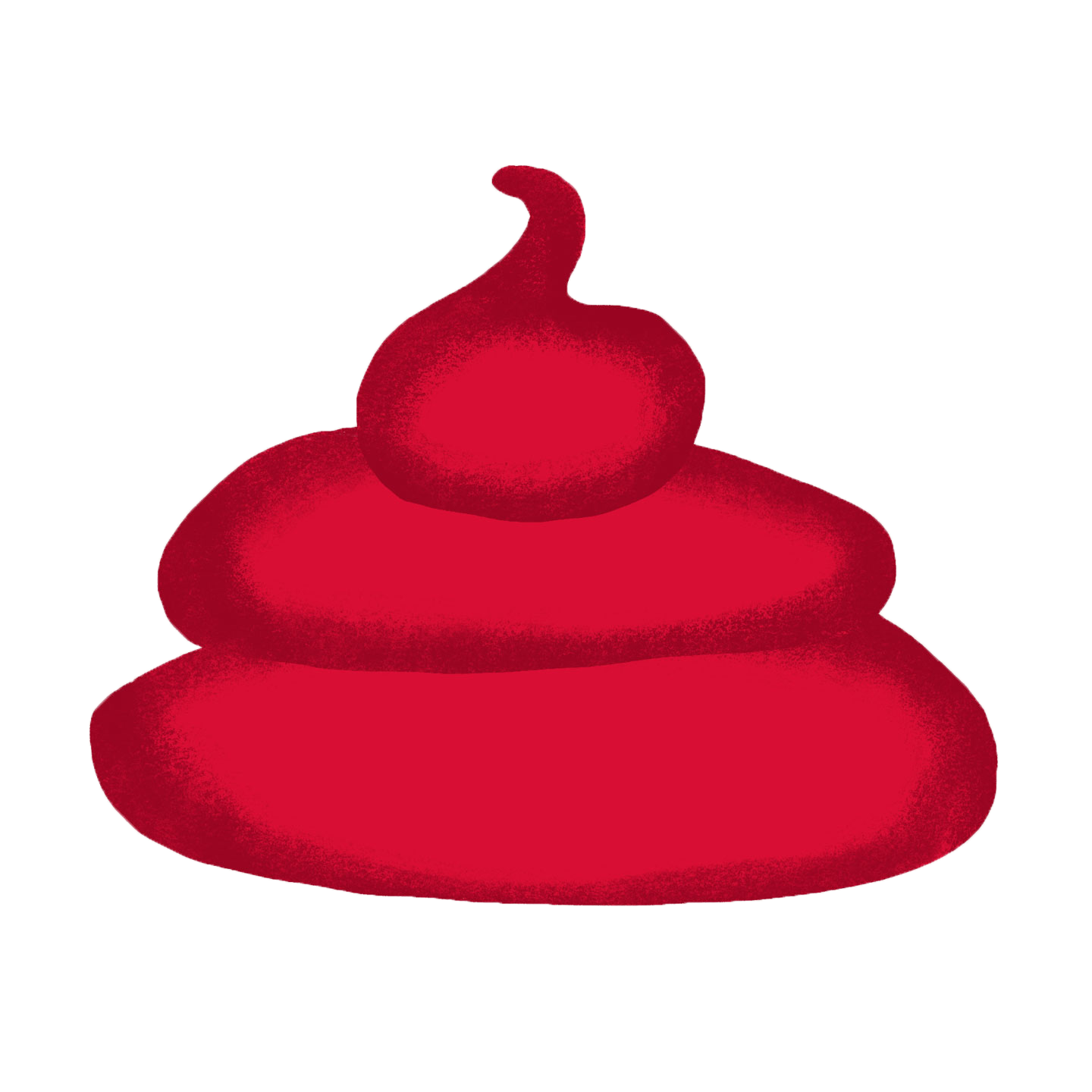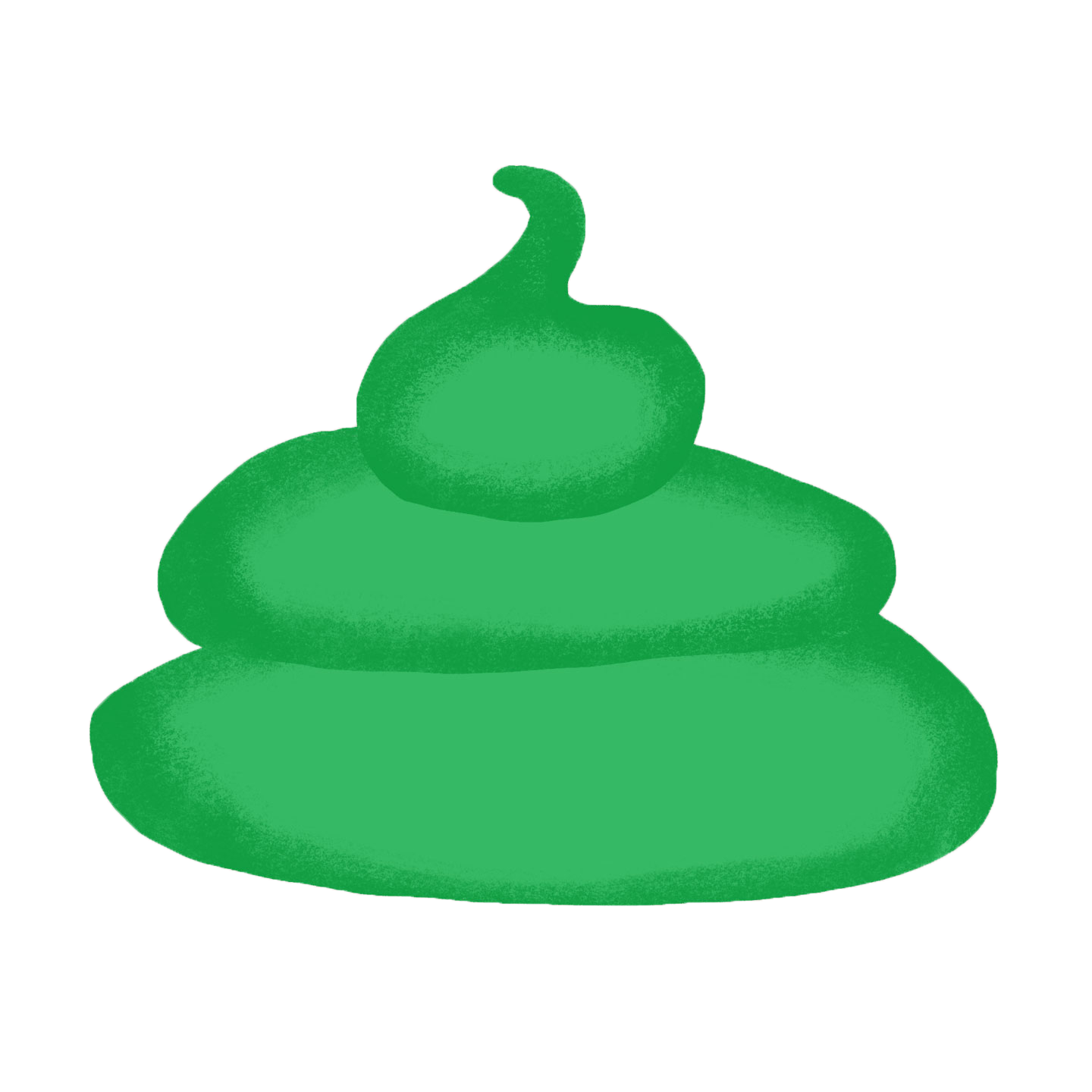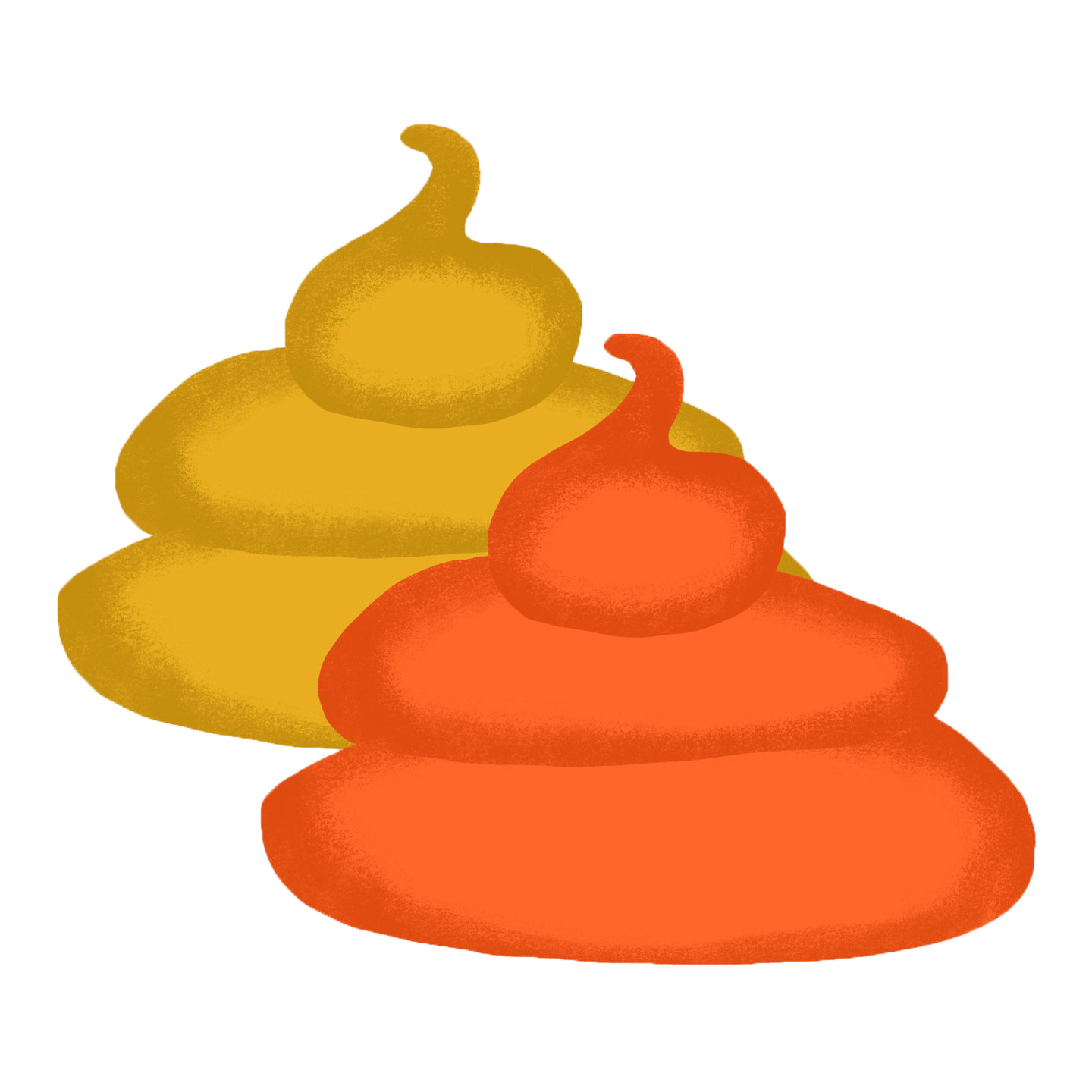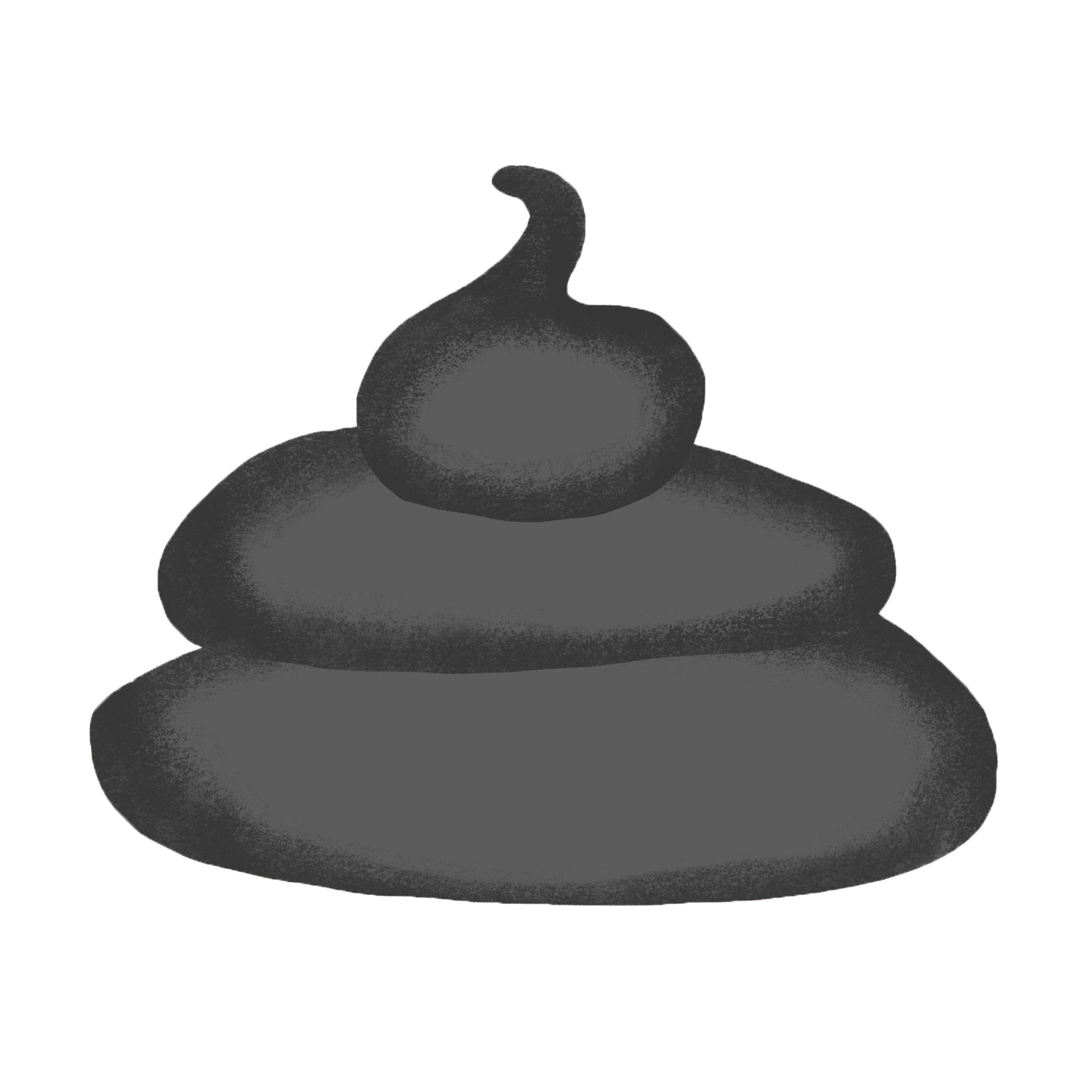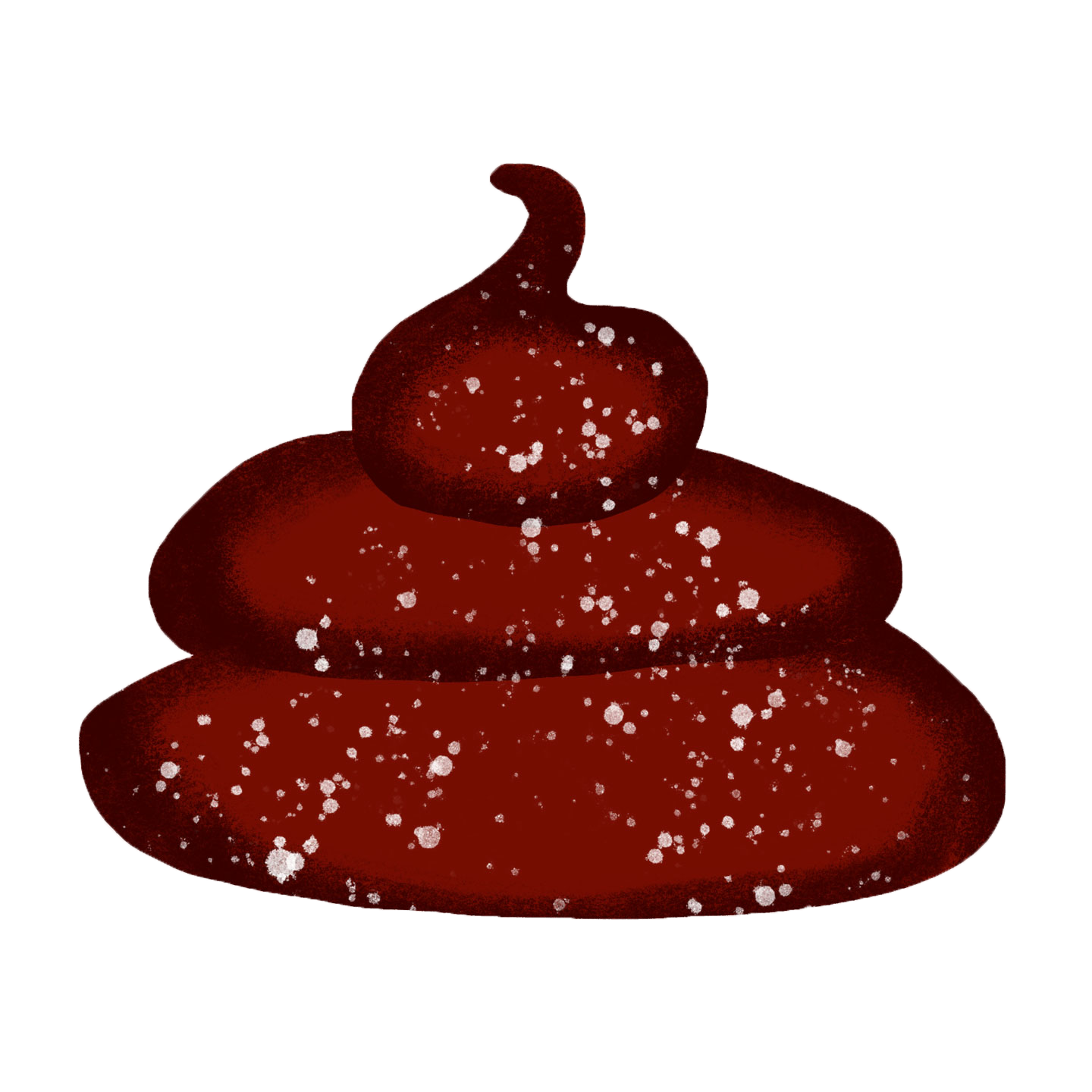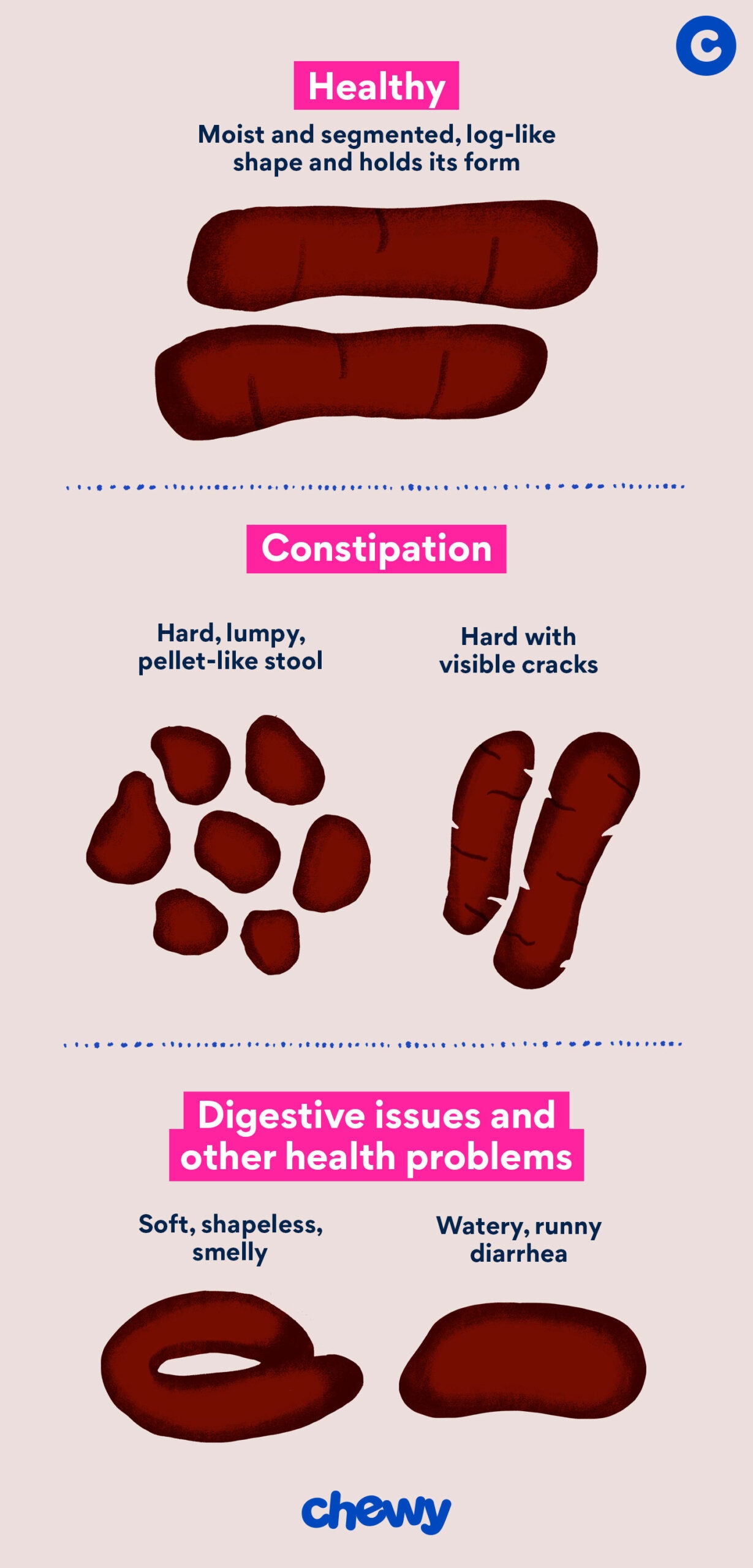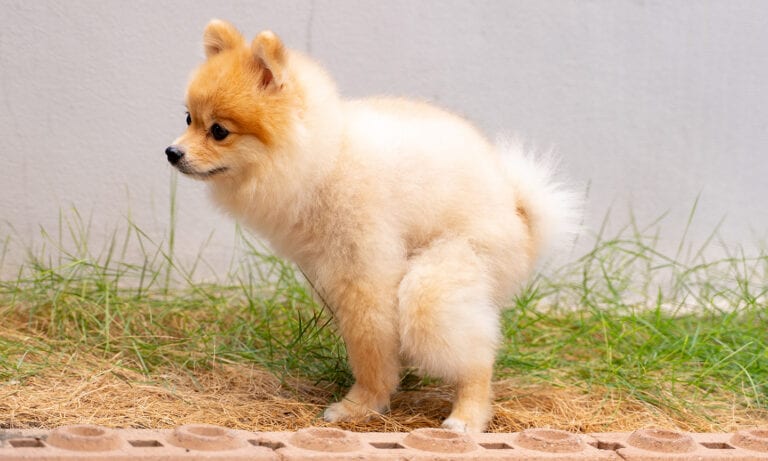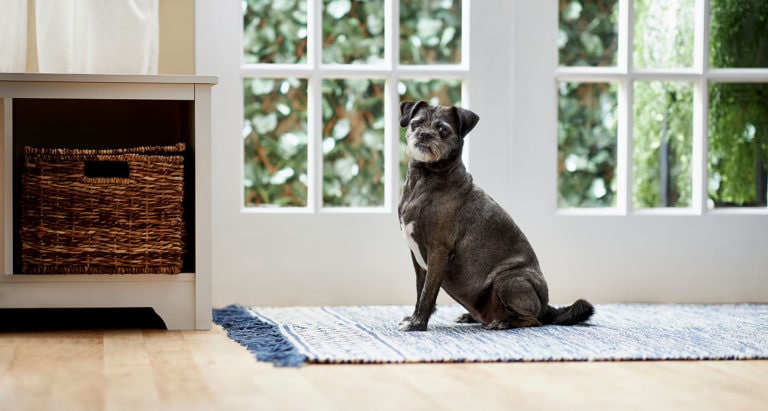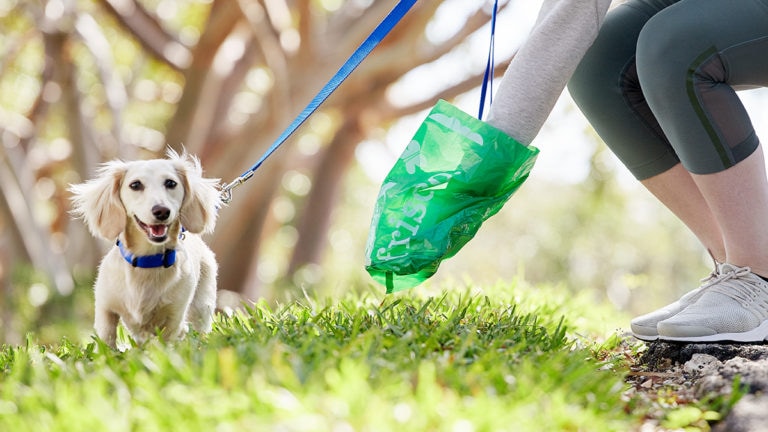You might just think of it as waste, but the color of your dog’s stool tells a story. Normal dog poop is chocolate brown, and a bit squishy (although it comes out in solid, log-like pieces). If you’re seeing any other colors, it may be time to pay closer attention to what your dog’s bowel movements are trying to tell you.
To help clue you in to your pooch’s overall health, we’ve rounded up some of the most common colors you may see in your dog’s feces, and what they mean. We also put together a handy dog poop color chart that you can quickly reference whenever you’re asking yourself the question, “Why is my dog’s poop [insert color here]?”
Click to jump to each section:
Brown
Healthy
Black/Tarry-Looking
Black dog poop often means there’s digested blood coming from the GI tract—aka some type of internal bleeding, according to Dr. Alejandro Caos, DVM, a veterinarian with The Vets in Denver. In this case, the stool will also look tarry and sticky.
Some common causes of internal bleeding are:
- Ulcers
- Bleeding or clotting disorders
- Foreign bodies or objects stuck in the digestive tract
- Acute trauma (being hit by a car, for example)
Black stools can also be a side effect of certain medications, like steroids or non-steroidal anti-inflammatory drugs (NSAIDs).
What Should You Do?
Dr. Caos recommends seeking immediate veterinary attention if you see black/tarry-looking stool, as it could be a serious condition requiring prompt diagnosis and treatment.
Red
Bright red dog poop or red streaks typically indicate bleeding in the lower part of the gastrointestinal tract, like the large intestine or anus.
According to Dr. Caos, some of the most common health issues associated with red stool are:
- Inflammatory bowel disease
- Colitis (inflammation of the colon)
- Parasites, such as hookworms or whipworms
- Inflammatory bowel disease
- Infections or impactions in the anal glands
- Ulcers
- Acute trauma
- Ingestion of foreign objects
In some cases, red stool can point to more serious health problems, like viral and bacterial infections; parvovirus; colorectal or anal cancer; and hemorrhagic gastroenteritis (HGE).
Hemorrhagic gastroenteritis (HGE) is a sudden onset of diarrhea that can affect all dog breeds and have various causes. Some of these causes include:
- An allergic reaction
- A sudden change in your dog’s diet
- Eating extra-fatty food
- Stomach or intestinal ulcers
- Blockage or foreign body in the digestive tract
- Tumors
- Intestinal parasites or bacteria
- Blood-clotting disorders
- Acute trauma
- Eating something toxic or poisonous
Red poop can also just mean your dog ate something that temporarily dyed their stool, like beets.
What Should You Do?
When a dog poops blood, bring them to the vet immediately. While blood doesn’t always indicate a serious health issue, it’s better to have your vet rule out anything potentially harmful.
Green
Green dog poop can mean several things:
- It's grass: Your dog may have eaten too much grass.
- Upset stomach: Your dog may have an upset stomach from overdoing it on his favorite Greenies treat.
- Underlying health condition: "It could be a sign of serious underlying health conditions such as inflammatory bowel disease, parasites, gastroenteritis, etc." says Dr. Kong.
- It's due to rodenticide: Your dog may have gotten into rodenticide. In this case, the poop will usually be bright green instead of dark green. This is a medical emergency.
What Should You Do?
“If the green color persists for more than a day or is accompanied by other concerning symptoms, consult a veterinarian for further evaluation,” Dr. Caos says. If the poop is bright green and you suspect rodenticide ingestion, get to an emergency vet clinic immediately.
Orange or Yellow
Orange or yellow dog poop usually signals something is awry in your dog’s digestive tract.
- Yellow poop in dogs often indicates a food intolerance, Dr. Kong says, “which is why we frequently see it after changing our dog's diet.” However, it could also indicate health issues such as digestive problems or liver disease, she adds.
- Orange dog poop, on the other hand, can be a sign of pancreatic issues; gallbladder or liver issues; and bacterial and viral infections, according to Dr. Kong.
What Should You Do?
“If you notice consistent or persistent orange or yellow stool, consult a veterinarian to assess your dog's liver and gastrointestinal health,” Dr. Caos says.
Gray
Gray poop also points to digestive health.
- Your pup may have trouble breaking down fats: This could mean there’s too much fat in the diet or there’s a problem with the pancreas, like exocrine pancreatic insufficiency (EPI)—which is the inability to produce sufficient amounts of pancreatic enzymes that are essential for proper digestion.
- There may be problems with the biliary ducts—the tubes that carry bile from the liver to the gallbladder. Bile breaks down fats and fatty acids, so if this system isn’t running smoothly, it can lead to malabsorption issues.
What Should You Do?
Because gray stool may be related to liver or biliary system problems, consult a veterinarian to investigate the underlying cause and determine appropriate treatment, Dr. Caos says.
White Specks
White specks in dog poop look like tiny grains of rice.
- If the white spots are moving, your dog may have intestinal worms, like tapeworm, roundworm or hookworm. Your dog needs to go to the vet for a deworming.
- If the spots aren’t moving, it could be undigested food, too much calcium and/or bone bits (especially if your dog eats a raw diet).
“White dog poop can [also] indicate a problem with the liver or bile duct, and a parasitic infection,” says Dr. Kong.
What Should You Do?
Because white poop can have several underlying causes, veterinary attention is necessary to get to the bottom of it and provide appropriate care, Dr. Caos says.
Purple
Like red poop, purple stool may be a sign of hemorrhagic gastroenteritis (HGE), especially if it has a jam-like consistency.
It can also point to hormone issues, like Addison’s disease, which is a deficiency in the hormones made by the adrenal glands.
What Should You Do?
If you see purple poop, especially if it’s accompanied by severe vomiting, lethargy and fever, seek veterinary care immediately.
Dog Poop Consistency: What's Healthy?
- Healthy dog poop is moist and segmented. It should have a log-like shape and hold its form.
- Hard, lumpy stool may be a sign of constipation.
- Diarrhea can indicate digestive issues and other health problems.
In some cases, probiotics like the Vibeful Probiotic Gastrointestinal Support, may help. This supplement features prebiotic fibers to help support healthy digestion and the immune system. More specifically, each packet packs 200 million CFU/g (colony-forming units) probiotics to promote good bacteria.
In others, you may need to work with your vet to correct an underlying condition that’s causing the consistency issues.
FAQs About Dog Poop
Q:
What should I do when my dog poops blood?
Q:
What color dog poop is concerning?
Q:
What color is parvo poop?
The Bottom Line
It’s normal to be concerned when you see a different color in your dog’s poop, but a changing hue doesn’t always mean there’s something serious going on.
Instead of panicking, grab a sample of your dog’s stool and make an appointment to bring it to the veterinarian. Your vet will run diagnostic tests on both the stool and your dog to help figure out next steps.
In the meantime, get to know everything you can about your dog’s poop, so you can identify when something just doesn’t seem quite right.
More about poop and dogs:
Share:
